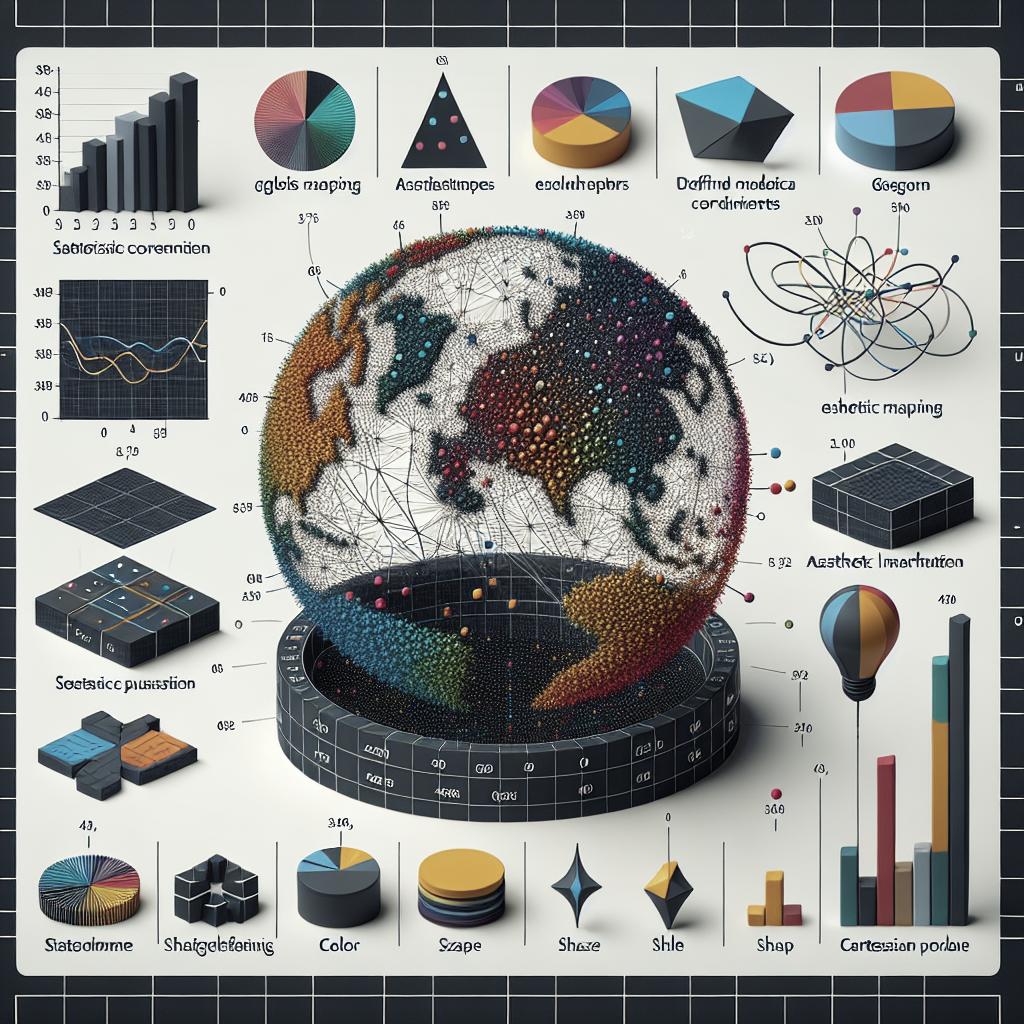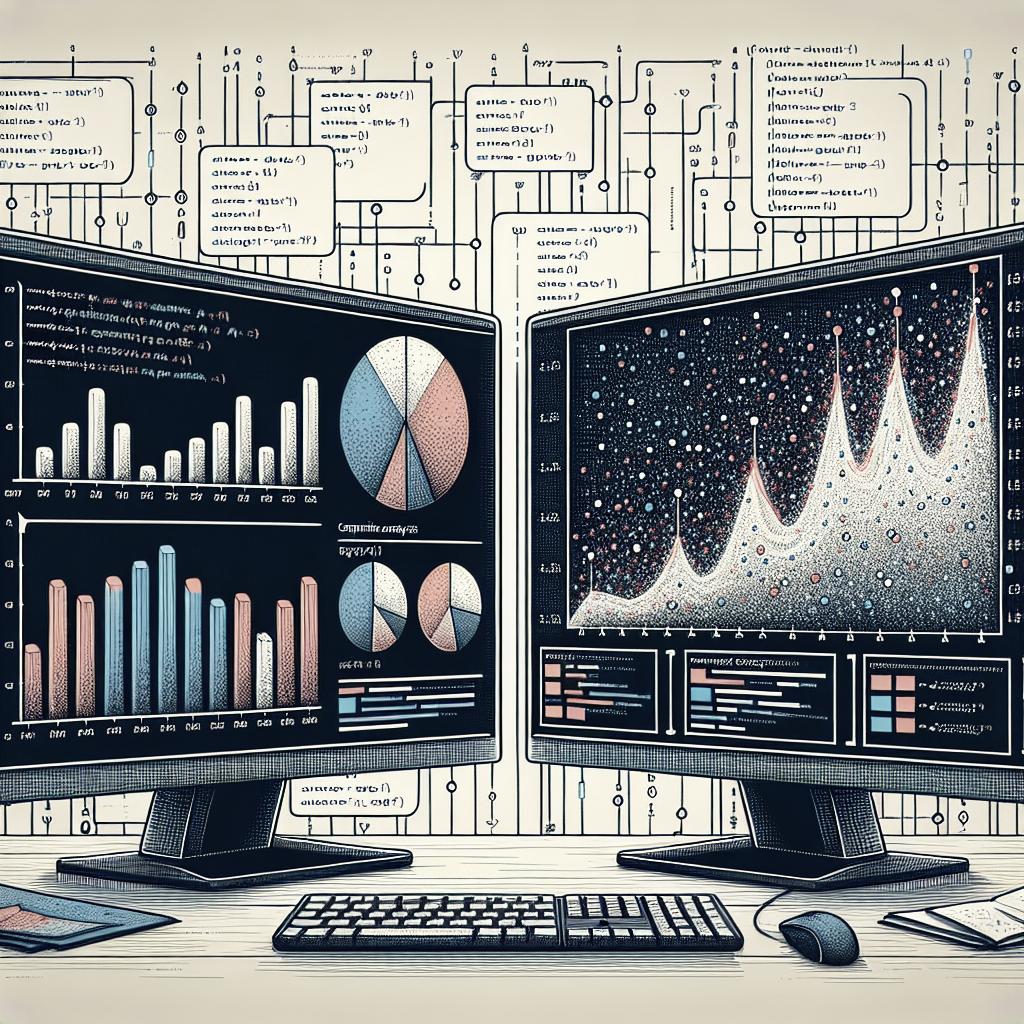Aesthetic Mapping in ggplot2: Unraveling the Art of Data Visualization
In the realm of data visualization, ggplot2 is a powerhouse that enables the creation of expressive and informative graphics in R. One of its central features is aesthetic mapping, which allows data scientists and analysts to map variables in their data to graphical attributes like color, shape, and size. This blog post takes a deep dive into the concept of aesthetic mapping in ggplot2, guiding you through its prerequisites, fundamentals, and advanced applications such as creating custom wrappers. By the end of this post, you will not only understand how to effectively use aesthetic mapping to tell compelling data stories, but also explore valuable resources to further refine your data science skills.
Prerequisites
To get started with aesthetic mapping in ggplot2, it’s essential to have a fundamental understanding of R programming and the ggplot2 package. If you’re new to R, consider familiarizing yourself with basic concepts such as data structures (vectors, data frames), functions, and libraries. GGplot2, a part of the tidyverse, relies on a layered approach to building plots, which is crucial to grasp for effective aesthetic mapping.
Install the ggplot2 package using the command
install.packages("ggplot2")
in R. Additionally, ensure your data is in a tidy format, as ggplot2 works seamlessly with tidy data structures. A tidy data set typically means that each variable forms a column, each observation forms a row, and each type of observational unit forms a table.
Basics
Aesthetic mapping in ggplot2 involves mapping data variables to aesthetic attributes of a plot, such as position, color, size, and shape. The
aes()
function is used to set these mappings. For instance,
ggplot(data = df, aes(x = variable1, y = variable2))
assigns ‘variable1’ to the x-axis and ‘variable2’ to the y-axis.
Understanding the distinction between aesthetic and non-aesthetic attributes is critical. Aesthetic attributes are variables in the data that change based on the data points, while non-aesthetic attributes, like plot titles and axes labels, remain constant for a plot.
Color and Fill
Colors enhance the readability and interpretability of a plot. In ggplot2, the ‘color’ aesthetic typically alters the outline color of geometric objects, such as points or lines, while ‘fill’ modifies the interior, applicable to objects like bars and boxes.
Mapping a discrete variable to color creates distinct colors for each category, aiding in category differentiation. For continuous variables, ggplot2 provides a color gradient, which can be customized using scale functions like
scale_color_gradient()
and
scale_fill_gradient()
.
Shape
The ‘shape’ aesthetic is predominantly used with point-based geoms like
geom_point()
. By mapping a variable to ‘shape’, different categories of data are represented by different shapes, providing a clear visual distinction.
There are a variety of shapes to choose from, identified by both numbers and names. However, note that shapes have a limit of six for a variable with many categories, ggplot2 will repeat shapes after this point, which might lead to confusion.
Group and Line Type
Grouping is primarily useful when working with line-based geoms. By specifying a ‘group’ aesthetic within
aes()
, you can ensure that multiple lines are drawn for each group in the data without combining them into a single line.
For variable line patterns, the ‘linetype’ aesthetic comes into play. This can be used to differentiate between multiple lines in a plot by altering the dash patterns. You can specify line types based on categorical variables, enhancing clarity in line charts with multiple lines.
Label
Labels are essential for adding context and explanation within a plot. The ‘label’ aesthetic can be used with
geom_text()
or
geom_label()
to display data values or labels directly on the plot. This function is crucial in plots where precise data reporting is necessary.
Though adding too many labels can clutter a plot, strategic labeling can improve audience understanding and engagement, particularly when highlighting specific data points or insights.
Create Wrappers Around ggplot2 Pipelines
Wrapping ggplot2 pipelines into functions or creating custom themes can significantly enhance productivity and plot consistency across projects. By defining reusable code blocks, you can streamline the plotting process and ensure uniform aesthetics without manually adjusting settings for each plot.
Create custom themes using
theme()
function to specify non-aesthetic attributes like font size, background color, and grid visibility. Additionally, consider building wrapper functions that encapsulate complex ggplot2 pipelines, simplifying the call and reducing repetitive code.
Recommended for You
Books – Data Science
Diving deeper into data science literature is an excellent way to expand your understanding of ggplot2 and aesthetic mapping. Books like “R for Data Science” by Hadley Wickham and Garrett Grolemund cover a comprehensive suite of data science topics, including data visualization with ggplot2.
Another highly recommended book is “ggplot2: Elegant Graphics for Data Analysis” by Hadley Wickham. This book provides a thorough exploration of ggplot2’s capabilities, including various aesthetic attributes and how to effectively use them to create insightful visualizations.
Lessons Learned
| Section | Key Points |
|---|---|
| Prerequisites | Understand R basics, install ggplot2, ensure tidy data format. |
| Basics |
Usefor mapping, learn difference between aesthetic and non-aesthetic attributes. |
| Color and Fill | Differentiate categories, customize with scale functions. |
| Shape | Use different shapes for categories, watch for repetition in large groups. |
| Group and Line Type | Group line geoms, differentiate with line types. |
| Label |
Add context with, avoid clutter. |
| Wrappers | Create functions and themes for consistency and efficiency. |
| Recommended Books | Resources to explore ggplot2 and data science deeper. |


